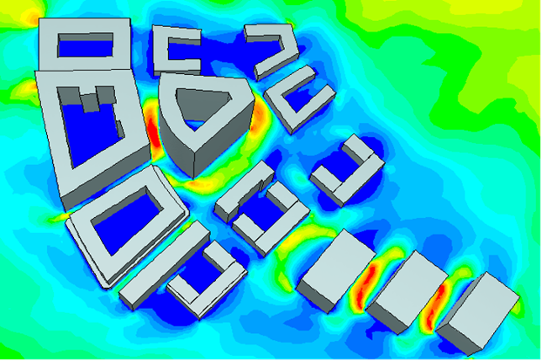Calculations are made for several wind directions. Consideration is given to buildings and essential topography within the neighbourhood.
The local wind environment is, to a great extent, governed by how the buildings are designed. To provide more direct answers regarding the wind environment that can be expected for a particular proposed construction, it is often the final proposals for the design which need to be studied in detail. This can be done with computer simulations of the wind environment.
The results from flow calculations are presented in the form of a so-called relative wind -this is because wind comfort criteria are based on this parameter. When calculating the relative wind, the effects of gusts (turbulence) is included. Turbulence makes the wind feel much stronger than if the wind speed had been the same but without the turbulence.
Besides the results from the flow calculations, wind statistics are also provided from the nearest weather station. Wind statistics provide a measure of how representative the wind directions examined are for the wind environment in general and, in this way, makes the interpretation of the results easier.
For this study, emphasis should be made on the differences in wind speed within the area, even if the results may be regarded as a good approximation of the absolute values.

Alternative solutions for garden areas and land development
Flow calculations provide answers regarding how planned measures to improve the wind environment can be expected to work. The calculations are made with and without the planned measures (bushes, trees, wind screens etc.), and are then compared to find the optimal solution.